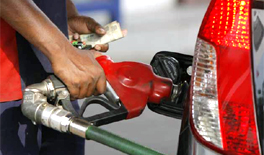Technology roadmap: fuel economy of road vehicles

This roadmap explores the potential improvement of existing technologies to enhance average fuel economy of motorised vehicles and provides recommendations to reduce the average fuel economy of road motorised vehicles by 30% to 50% by 2030.
This roadmap explores the potential improvement of existing technologies to enhance the average fuel economy of motorised vehicles; the roadmap’s vision is to achieve a 30% to 50% reduction in fuel use per kilometre from new road vehicles including 2-wheelers, LDV s and HDV s) around the world in 2030, and from the stock of all vehicles on the road by 2050. This achievement would contribute to significant reductions in GHG emissions and oil use, compared to a baseline projection. Different motorised modes are treated separately, with a focus on LDV s, HDV s and powered two-wheelers. A section on in-use fuel economy also addresses technical and nontechnical parameters that could allow fuel economy to drastically improve over the next decades. Technology cost analysis and payback time show that significant progress can be made with low or negative cost for fuel-efficient vehicles over their lifetime use. Even though the latest data analysed by the IEA for fuel economy between 2005 and 2008 showed that a gap exists in achieving the roadmap’s vision, cutting the average fuel economy of road motorised vehicles by 30% to 50% by 2030 is achievable, and the policies and technologies that could help meet this challenge are already deployed in many places around the world.
See Also
Feature: Fuel economy standards - a non-starter.
Report: International comparison of LDV fuel economy & related characteristics.
Feature: Petrol price hike's hidden dangers.
Report: 50by50 prospects and progress.
Report: EU GHG reduction potential for heavy-duty vehicles.
Report: Technology roadmap - electric and plug-in hybrid electric vehicles.
Report: Biofuels for transport.
Report: Avert the great guzzle.
